Choice Pantry at Crispus Attucks Community Center

A NEW FREE FOOD RESOURCE ERA
Crispus Attucks Community Center is transitioning its free food pantry from a traditional pre-packaged offering to a participant choice model. On Wednesday, June 12, the Center debuted its new format, welcoming neighbors into the gym space that had been converted by staff and volunteers into a pop-up grocery store. Participants browsed shelves of nonperishable items and refrigerated cases with dairy, eggs, and proteins, and were able to select items based on their dietary preferences.
“We’re excited to evolve our service model at the food pantry to be more in line with what our community is asking for,” Crispus Attucks Director Josh Hunter said. “Not only will offering neighbors experiencing food insecurity choice in the food they bring into their homes create more equity in our community, but it will also help reduce food waste from unused items in pre-packaged boxes.”
In addition to shifting to a participant choice model for the food pantry, the Center is also implementing a new appointment-based system to ease the experience for neighbors visiting the food pantry. The intention for the appointment-based system is for folks to be able to schedule a time that works best for them, eliminate the stress of wondering if there will still be food available, and provide staff insight on how much food to order each pantry day to ensure there is enough.
ACCESS THE CHOICE PANTRY
The Center operates its appointment-based participant choice food pantry on the second and fourth Wednesday of every month from 2 p.m. to 6 p.m. Schedule an appointment to visit the food pantry, or learn more on our free food resources page.
VOLUNTEER AT THE CHOICE PANTRY
We welcome volunteers to help set up and tear down the pop-up grocery store, as well as assist visitors to the food pantry. Anyone interested in volunteering can sign up online – dates are available now, with more to be added as we continue to operate! For questions about getting involved, please contact Josh Hunter at jhunter@caplanc.org.
WHY PARTICIPANT CHOICE?
According to the Lancaster County Hunger Mapping Project, more than 50,000 people experience food insecurity each year in Lancaster County. The charitable food system in the county is extensive and is one of the lowest-barrier social services supporting Lancastrians experiencing food insecurity in accessing food. It is not immune to challenges, however, and the second section of the Hunger Mapping Project makes recommendations to increase access and equity.
One recommendation is the adoption of a participant choice model. This model honors participant autonomy and dignity, recognizes that not all families and diets are the same, and helps to create equity in a space that has historically been and continues to affect people inequitably. People visiting participant choice food pantries are able to shop as they would in a grocery store, choosing food they want for their families based on their dietary preferences. An added benefit of this model is it can help to reduce food waste, as people are only taking what they know they will use, as opposed to being offered a pre-packaged box that may include some items they will not use.
The Hunger Mapping Project found that 87% of food pantry visitors throughout Lancaster County prefer a participant choice model at food pantries. Sixty-three percent (63%) of food pantries throughout Lancaster County offer a participant choice model; however, only 18% of food pantries in Lancaster City offer a participant choice model, with many citing limited storage space and under-resourcing. When we talked with visitors to the Center as we explored the participant choice model, we found that 54% preferred a participant choice model out of four suggested food pantry models.
Looking at historical inequities related to food insecurity, the Hunger Mapping Project found poverty to be the leading indicator for people experiencing food insecurity in Lancaster County. The southeast community in Lancaster City, where the Center is located, has the highest poverty rate in the county, at 47%. The Hunger Mapping Project found, too, that Black and Latinx Lancastrians are three-and-a-half times more likely to experience food insecurity than white Lancastrians. Black and Latinx residents predominantly call the southeast community in Lancaster City home. Creating a more aligned, accessible food pantry at the Center with this transition to a participant choice model is an impactful step toward creating a more equitable community.


